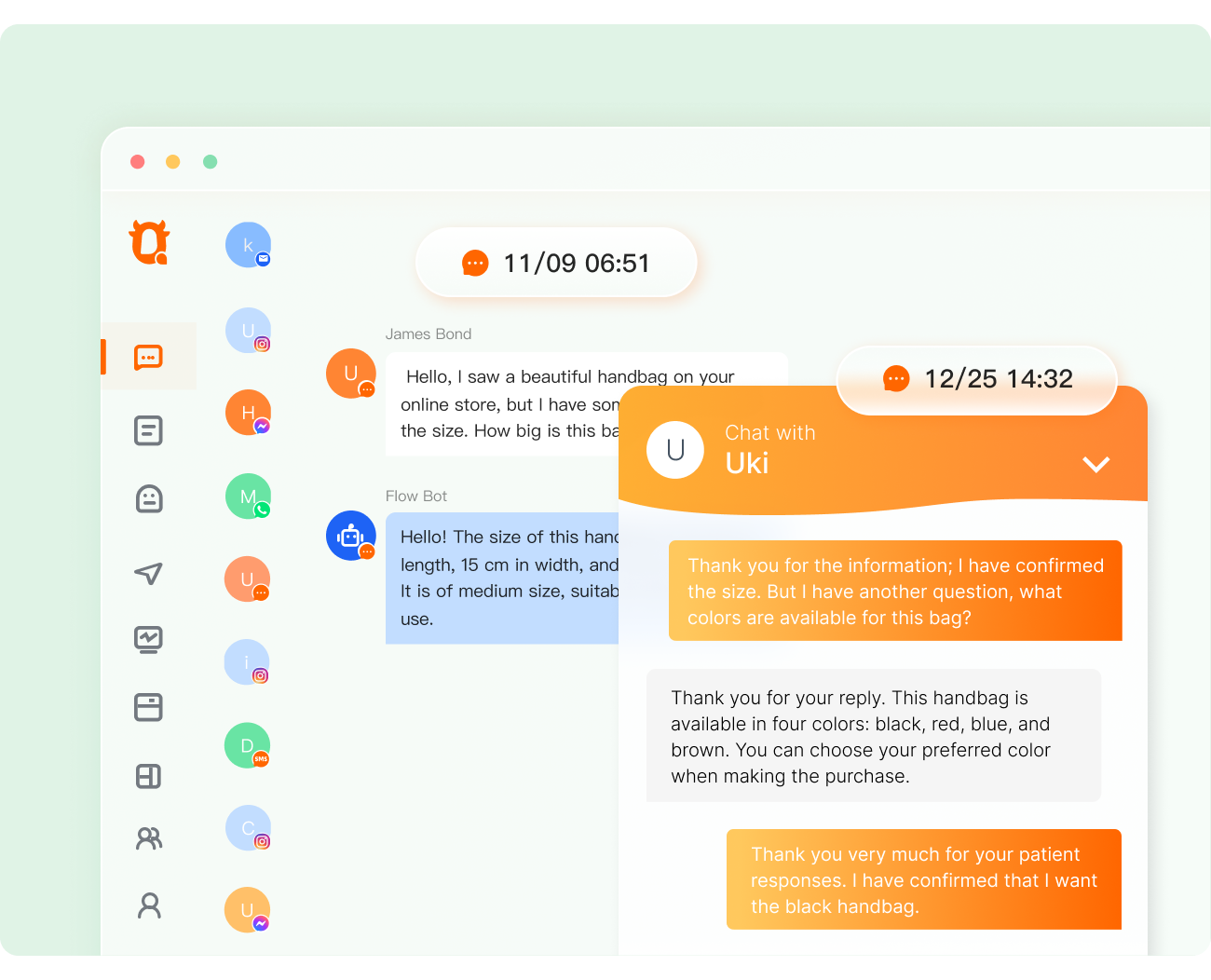How to Implement AI in Customer Service: A Step-by-Step Guide

Artificial Intelligence (AI) is revolutionizing customer service, offering a glimpse into a future where interactions are seamless and efficient. The significance of how can ai help customer service in enhancing customer service cannot be overstated, with its ability to streamline operations and elevate user experiences. In this guide, the steps to implement AI effectively will be explored, ensuring businesses can leverage this technology to its fullest potential.
Understanding AI in Customer Service

What is AI in Customer Service?
Artificial Intelligence (AI) in customer service refers to the integration of intelligent technologies to enhance Customer interactions and streamline operations. By leveraging AI tools like chatbots and voice biometrics, businesses can provide immediate responses and optimize user experiences effectively.
Definition and Examples
The definition of AI in customer service revolves around utilizing advanced algorithms to automate tasks traditionally handled by human agents. For instance, companies like Amazon have successfully implemented AI-powered chatbots to handle a significant portion of customer inquiries, reducing response times and improving overall satisfaction.
Benefits of AI in Customer Service
The benefits of incorporating AI into customer service are manifold. Not only does it reduce average handling time (AHT), but it also enhances customer satisfaction by providing swift issue resolution. Companies that embrace AI-driven solutions witness a significant increase in operational efficiency and a boost in customer loyalty.
How Can AI Help Customer Service?
AI plays a pivotal role in transforming traditional customer support into a more proactive and personalized experience for users. By deploying AI-powered tools, businesses can streamline their operations, leading to improved customer interactions and increased satisfaction levels.
AI-Powered Customer Service Tools
AI-powered tools such as chatbots enable businesses to offer round-the-clock assistance to customers, ensuring prompt responses to queries and issues. These tools not only reduce response times but also empower customer service teams to focus on more complex problems, enhancing overall efficiency.
Improving Customer Service Effectively
Integrating QuickCEP into customer service processes can significantly reduce user time, making interactions smoother and more inconvenient. Additionally, by automating routine tasks through AI chatbot flows, businesses can customize customers' experience and work more efficiently, resulting in increasing sales & conversion.
Current Customer Service Landscape
In today's dynamic business environment, organizations face various challenges when it comes to delivering exceptional customer service. However, the integration of AI presents unique opportunities for companies looking to enhance their support mechanisms while staying ahead of the competition.
Challenges in Current Customer Service
One of the primary challenges faced by businesses is the increasing volume of customers contacting customer service, leading to longer response times and potential bottlenecks. Moreover, ensuring consistent quality across all touchpoints remains a key challenge for organizations striving to deliver exceptional experiences.
Opportunities for AI Integration
By embracing AI technologies, companies can revolutionize their approach to Customer service management. From automating repetitive tasks to personalizing interactions based on individual preferences, the possibilities for enhancing Customer experiences through AI are vast.
Steps to Implement AI in Customer Service
Step 1: Assess Current Customer Service Capabilities
To embark on the journey of implementing AI in customer service, businesses must first evaluate existing systems and tools. This critical step involves a thorough analysis of the organization's current customer service capabilities to identify strengths and areas for improvement. By understanding the existing infrastructure, companies can effectively strategize the integration of AI technologies to enhance operational efficiency and enhance customer service.
Evaluate Existing Systems and Tools
Assessing the performance of existing customer service resources is essential to determine their compatibility with AI solutions. By examining the effectiveness of current systems in meeting customer service goals, organizations can pinpoint areas that require enhancement through AI implementation. This evaluation sets the foundation for a seamless transition towards a more advanced and efficient customer service workflow.
Identify Areas for Improvement
Identifying key areas where AI can optimize customer service strategy is crucial for maximizing the benefits of this technology. By recognizing gaps in knowledge management or response times, businesses can tailor their AI objectives to address specific pain points. This proactive approach ensures that AI integration aligns with the organization's overarching goals and leads to tangible improvements in customer service delivery.
Step 2: Define AI Objectives and Goals
Once an assessment of current capabilities is complete, the next step is to establish clear objectives for integrating AI into customer service processes. Defining precise goals enables organizations to align their AI initiatives with broader customer service strategy, ensuring a cohesive approach towards enhancing user experiences.
Set Clear Objectives
Setting SMART (Specific, Measurable, Achievable, Relevant, Time-bound) objectives is fundamental in guiding the implementation of AI tools effectively. Whether aiming to reduce average handling times or scale personalization efforts, clearly defined objectives provide a roadmap for success in leveraging AI for improved customer service outcomes.
Align AI Goals with Customer Service Strategy
Aligning AI goals with overarching customer service resources ensures synergy between technological advancements and organizational objectives. By integrating AI solutions that complement existing workflows and enhance operational efficiency, businesses can create a seamless experience for both customers and support teams. This alignment fosters a culture of continuous improvement and innovation within the realm of customer service management.
Step 4: Implement AI Solutions
When it comes to implementing AI solutions in customer service, businesses must focus on deploying Chatbots and Virtual Assistants effectively. These AI-powered tools play a crucial role in enhancing customer interactions and streamlining support processes.
Deploying Chatbots and Virtual Assistants
Utilize AI tools for customer service with smart language processing capabilities to provide precise responses to customer inquiries promptly.
Enhance the accuracy of responses by leveraging machine learning algorithms that understand the context of customer queries.
Empower support teams with the necessary information to deliver relevant and personalized assistance based on a comprehensive knowledge base.
Training Customer Service Agents
Train customer service agents to leverage AI tools effectively in handling various customer service processes.
Equip agents with the skills to make informed decisions quickly, meeting customer needs more efficiently.
Enable agents to provide personalized services at scale, leading to improved business outcomes and enhanced ROI.
Step 5: Monitor and Optimize AI Performance
To ensure the successful integration of AI in customer service, businesses need to focus on monitoring and optimizing AI performance continuously. This step involves collecting and analyzing data to drive improvements in customer service delivery.
Collecting and Analyzing Data
Leverage AI benefits for customer service by analyzing vast amounts of data to gain insights into customer preferences, behavior patterns, and purchase history.
Use these insights to deliver tailored recommendations, promotions, and support that enhance the overall customer experience.
Foster long-term loyalty by providing personalized experiences that increase satisfaction levels among customers.
Continuous Improvement and Optimization
Embrace generative AI tools that speed up responses to common queries, automating basic tasks such as answering routine questions through chatbots.
Enable support representatives to summarize conversations effectively, provide detailed answers, and generate helpful articles using AI technology.
Improve efficiency in customer service operations by providing intelligent recommendations across knowledge bases, conversational insights, and customer data through AI systems.
Future of AI in Customer Service

Emerging Trends and Technologies
In the realm of customer service technology, AI continues to pave the way for transformative advancements. Studies have shown that AI technology brings a myriad of benefits, including improved efficiency, reduced response times, enhanced customer satisfaction, and valuable insights into customer behavior. As businesses strive to stay ahead of the curve, understanding the emerging trends and technologies in AI is crucial for delivering exceptional customer service experiences.
Generative AI and Customer Experience
One of the key trends shaping the future of AI in customer service is the rise of generative AI. This innovative technology enables businesses to create dynamic and personalized interactions with customers, leading to a more engaging customer experience. By leveraging generative AI tools, organizations can streamline processes, automate responses, and deliver tailored solutions that cater to individual needs effectively.
AI-Driven Personalization
Personalization lies at the heart of exceptional customer service experiences. Through AI-driven personalization, businesses can craft bespoke interactions that resonate with each customer on a deeper level. By analyzing data points and behavioral patterns, AI empowers organizations to offer customized recommendations, promotions, and support services that enhance overall customer satisfaction.
In the realm of customer service, AI stands as a transformative force, enhancing interactions and optimizing operations. The integration of AI tools like chatbots and voice biometrics streamlines processes, reducing response times and elevating user satisfaction. Businesses must assess current capabilities, define clear objectives, and choose the right AI solutions to propel their customer service into the future. As generative AI emerges as a key trend, personalized experiences and efficient responses become the norm. Embracing AI-driven personalization ensures businesses stay ahead by delivering tailored support that resonates with each customer.
See Also
Enhancing Customer Engagement: The Power of AI Technology
Unleash Customer Service Success: Conversational AI with NLP
Building Your Initial Website AI Chatbot: Step-by-Step Instructions
Maximize E-commerce Potential with AI Chatbots: Comprehensive Manual
Perfecting Customer Retention Tactics: Detailed Step-by-Step Plan


